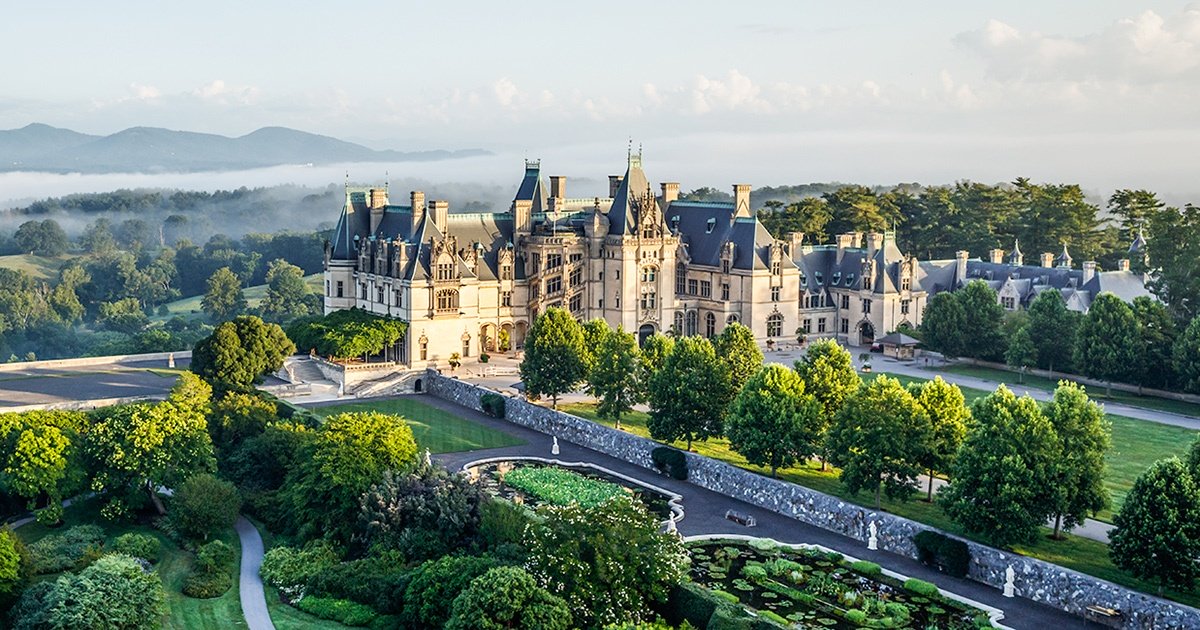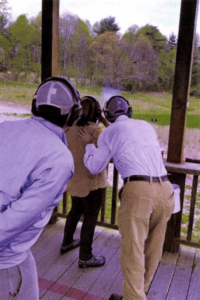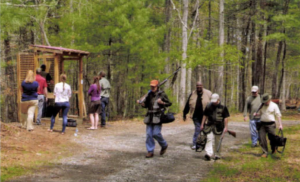Biltmore’s Sporting Clays Club
April 22, 2020



 Hunting
Hunting

Guests can get a taste of George Vanderbilt’s legendary hospitality and shotgun sports at the Biltmore Sporting Clays Club close by the elegant old mansion.
A renowned collector of fine art, and among his holdings a few classic hunting scenes, George Vanderbilt was not an impassioned shooter. But as gentlemen of the Victorian era’s sporting class were wont to do, he relished a good day afield with friends. In North Carolina’s mountains and valleys were ample land and water for superb hunting and fishing. Between 1889 and his death in 1914, Vanderbilt amassed 125,000 acres and named it Biltmore, commemorating the family’s ancestral roots in Holland.
While guns were not his craving, conserving wild game was, and his estate was patrolled by squads of rangers to prevent poaching. Yet he was the consummate host and took pride in showing his guests a delightful outing. Possibly, the day’s agenda included a shoot for driven pheasants and hunting grouse on the wooded bottomlands bordering the French Broad River.
If the season were light, hunts for bear, boar, turkey, and white-tailed deer could be arranged from his hunting camp, Buckspring Lodge. Dark, heavy, and squat in the Adirondack style so favored as summer retreats by wealthy New Yorkers of the late 1890s, the lodge crested a gap beneath 5,700-foot high Mt. Pisgah, 20 miles from the elegant Biltmore chateau. Though its buildings are long gone, a night at the adjacent Pisgah Inn on the Blue Ridge Parkway gives one a sense of the setting that Vanderbilt’s guests experienced so long ago.

Other than professional culling of whitetails that ravage gardens and crops, hunting is not permitted on the 8,000 acres that remain of the original estate. Today’s guests can, however, avail themselves of Vanderbilt’s legendary hospitality and shotgun sports at the Biltmore Sporting Clays Club across the river from the mansion.
Established under the watchful eye of Dale Klug, director of Biltmore’s outdoor adventure program, Biltmore offers two 5-stand ranges, two sporting clays courses, and voice-activated ranges for traditional trap and skeet. The courses sprawl along gently sloping gravel lanes through a forest of mixed hardwoods and pines. In spring, when there’s a lull in the shooting, yelps of wild gobblers can be heard echoing across the land.
One of the 5-stand courses is reserved for members of the club, but the other is prominent in Biltmore’s shooting instruction. Certified coaches show novices how to break birds, no matter how limited their experience. Beretta shotguns can be rented and shells are available. Or you can bring your own gun and ammo.
Of the two 50-round sporting clays courses, 7-station Woodland is the more difficult. Springs on its traps are torqued somewhat tighter, and the trajectory of the targets requires greater ability to swing surely and break the first before dealing with the second, often an on-report double.
The Vineyard course rounds the flank of a small ridge above acres of vines growing grapes for Biltmore’s wines. Angles on this course are not so severe as Woodland’s and neither is the velocity of the clays. My plan for my next trip is to take my vintage Parker shotguns, learn to shoot them on the 5-stand courses, then exercise them on Vineyard before totally embarrassing myself at the hands of Woodland’s traps.
I also had the opportunity to visit Biltmore for Target & Taste, a seasonal event that would have more than pleased Mr. Vanderbilt. The shooters checked in at a remodeled farm named for its last tenant, Jones, an estate worker. Some guests, including a young woman who’d never fired a shotgun and her dad, headed for lessons on the teaching 5-stand range. Later I would see her break a bird on the Vineyard course much to her and her father’s obvious joy. Other shooters, more confident or untutored perhaps, made a beeline for Woodland’s tougher traps.

That afternoon, as billows of gray clouds thick with moisture began to fill the sky, staff from the estate’s restaurants spread an array of heavy hors d’oeuvres on the farmhouse porch. No one passed up the duck confit, juniper smoked elk loin, or roast quail. We were served vintages from Biltmore’s cellar—a Gewurztraminer and Chardonnay from the estate’s reserve stocks as well as an excellent Napa Valley syrah and a reserve cabernet. Targets first, then tastes is always the rule of the day.
Shooting lessons and rounds of sporting clays can be arranged through Biltmore’s Outdoor Adventure Center, as can float trips, fly fishing, horseback riding, and off-roading. Shotgunners who live in the Southern Appalachians may want to join the sporting clays club and thus receive deep discounts. Others might consider spending a couple of nights at any of the inns on the estate. The Inn on Biltmore is legendary for luxurious accommodations, and well as a second hotel adjacent to the winery, the outdoor center, and shops in Antler Hill Village. A classic 1900s English style cottage is also available. No matter where you choose to lodge, you will feel like a Vanderbilt yourself when you visit Biltmore and experience their ranges.
